Interview – Masters of Many Podcast
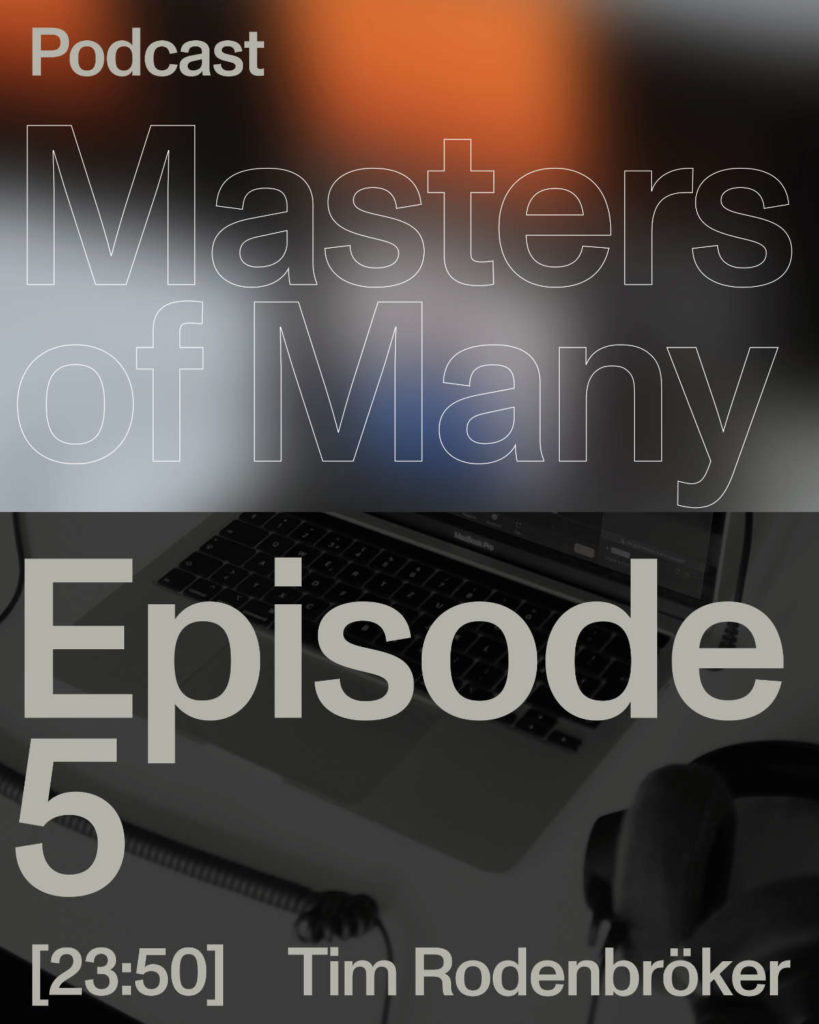

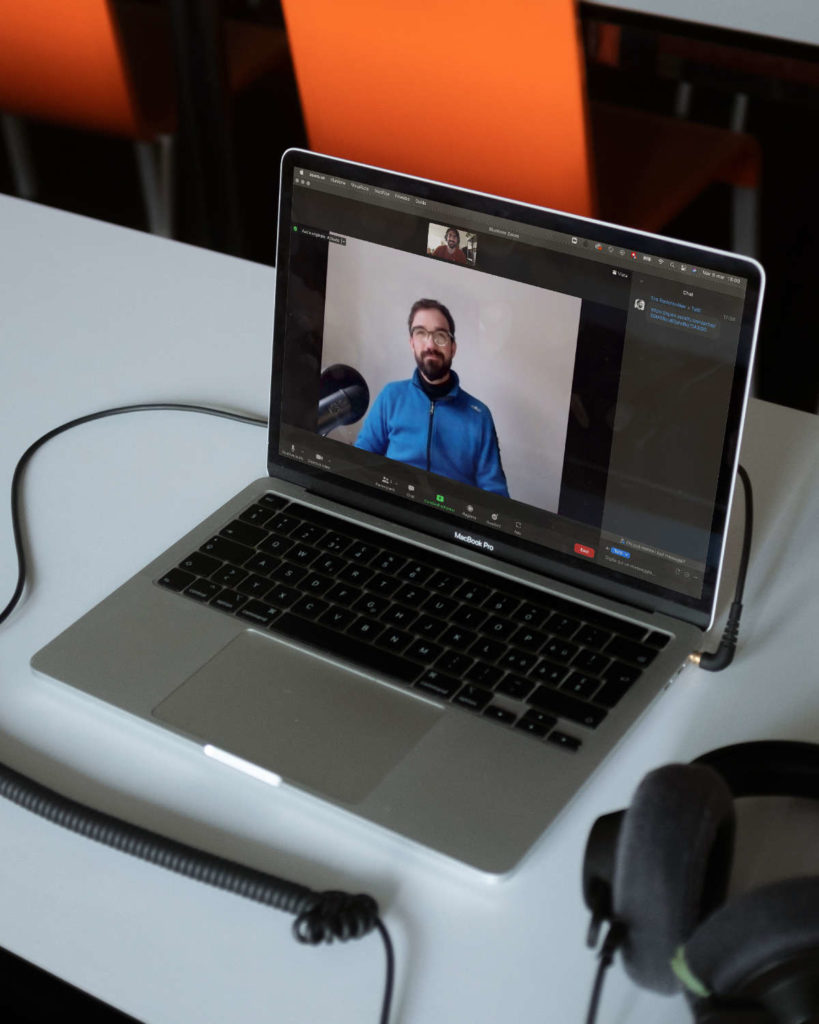
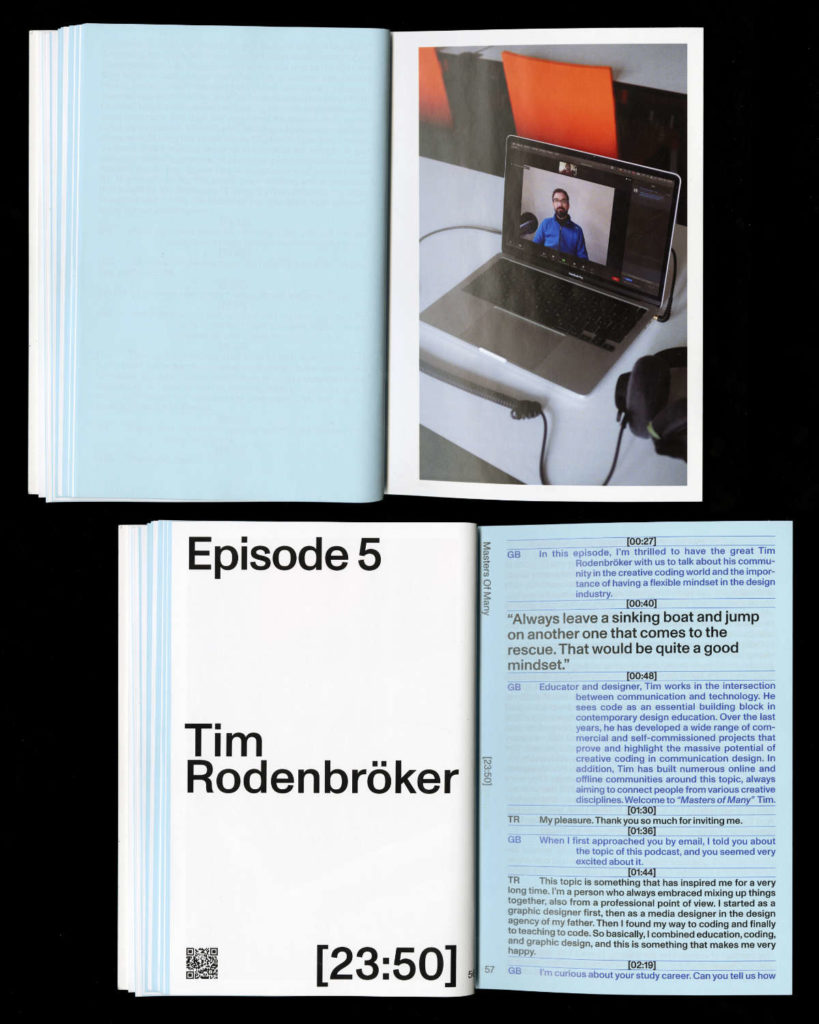
Giacomo Bastianelli is currently doing his master’s degree in type design from écal in Lausanne. His final thesis research project “Masters of Many” investigates interdisciplinarity in design and a part of his work is a podcast in which he interviews various creatives on this topic. I’ve had the honor of being a guest in Episode Five, which is now online at Spotify.
Transcription by Giacomo Bastianelli
Ok here we go
So just to give you some context this is for a short research paper which im writing which is mostly about three kind of areas: generative design practice in general, then also about flexible information systems and building a visual language, then the third part is a bit speculative it’s about how we can use these tools to investigate the digital cultural framework that we live in.
I have more specific questions on these but I’ll just go through as we go along. So just to get started i was wondering if you could talk about your practice at the moment, you know what you’re currently involved in and what your work is like at this point in time
Sure sure yes, I do create an online platform and community for learners in creative coding and computational thinking to empower them for a digitised and technologised future. That’s basically a bold statement but i think that’s what i do right – im thinking deeply about what kind of skills they need in the future in the design field, what kind of skills are beneficial for their personal development, and I try to build an online platform around these questions. Also trying to find out how digital education and online education – what problems it can solve, where the boundaries are. Yeah, that’s basically what I do: I’m building this platform which is kind of a combination of an elearning platform and a community, and I’m also doing my masters studies which was kind of a decision to, let’s say strengthen, this project and to get feedback from students and teachers in the field of design and art. And I’m currently preparing my masters thesis which is a strategy guide about the future development of my platform.
Ok that’s really interesting! So there’s this interaction between – because I know you do a lot of experimental kind of practice within generative design in order to then like teach that, do you find that there’s a symbiotic relationship between being able to teach and help others learn but also learning yourself? Or to be more experimental and kind of discover what else is possible within the field?
Hmm, I don’t know if I get your question exactly right but I’ve got a nice quote hanging on my wall here in my room – in the other room *laughs* – “Contribution is the ultimate tool for personal growth” and I think, yeah of course! I love to see myself not just as a teacher but as a learner. I’m learning to solve all the time. I’m learning to solve the problems I have in front of me. I’m learning how people learn. I’m learning creative coding through them because they apply knowledge to create new works, new – yeah – new visual worlds, new systems, and that’s something I find really valuable and interesting. To be honest I started – in this field of teaching I started very ‘blue eyed’ lets say. I always did the stuff I loved, and in any way, there was always something coming out that I could build upon. And it’s not like I’ve not been planning to create an online community, an elearning platform for creative coding, that was something that just evolved over time because I connected with people, I was talking to people about their needs and their wishes and their perspectives, and everything just comes together after and after, right? It’s just a process of learning, applying knowledge, of teaching and getting knowledge about how to teach, getting knowledge about the psychological structures of my students also, to understand what kind of questions they struggle with, and it has a lot to do with psychology, with philosophy, what kind of world we want to live in. And what kind of problems does the digitisation drop onto us? How does the field of design change? And what does it mean? What is important? All these questions just circle around my head and it’s an intense journey. It’s like you know a rollercoaster ride with struggle, with joy, with all the spectrum of feelings you can have. [Oh I would love to get the recording after, because I think sometimes you ask questions and it feels like ‘Wow, yes that’s true!’ * laughs* For sure, for sure Are you going to transcribe the interview? Yes, yes, so I’ll send you – if you’d like the recording I’ll send the recording but I’ll also transcribe it and set it into a kind of part of the article and I can send that to you for you to ok before I Excellent This isn’t going to be widely circulated, I don’t think it will go beyond our department. If that’s ok I would love to share these thoughts with my community that’s very important for me. Sure Sure! Because, they sometimes ask what is this guy doing there right? They join in my community but sometimes I’m very quiet for a few days, I don’t post something. I’m not someone who loves to post everyday or be too active on social media. I really like to tell stories and transfer information that are valuable. I think this is very important for my community because it gives them a little glimpse into my thinking, how I plan this company. Amazing. Anyway ok-]
So what you were talking about actually leads really well into my next question which was: Since I know you’re both involved in working, teaching and studying, and you’re always moving between these different areas. Yes. What is your position, your opinion on generative design in the context of graphic design? This is both commercially or academically. Do you think they overlap? Are they the same field? Are they distinct fields which can be applied to each other? How do you see the relationship between the two?
Oh my goodness. Got a thousand thoughts in my head now, hmm. Ok, let’s start with the simple answer *laughs* I think graphic design has evolved in a very clear direction over the course of the last centuries, centuries? Decades. Decades is ten years right? Yes. Yeah ok. And algorithms have or are becoming our partners right? Algorithms start to help us design products and media, and a few years ago… Ok let me just – sorry I gotta speak about it from a little bit different angle. So 2009, this book appeared on the market it was called ‘generative gestalt’ – ‘ generative design’: an amazing book with, showcasing amazing work which you could create with processing, but there was a huge problem with it: so the book kind of had a very specific aesthetic that didnt really match to the aesthetic, world’s, graphic design as well really living in, was kind of visually and aesthetically speaking to a specific audience that embraces complexity. But graphic designers mostly do NOT embrace complexity, they prefer to work with very clear forms, very clear communication very simple structures. And that was a problem. That was a problem that caused the people thought, from my point of view, that generative design was a tool to create complex illustrations. In a way, that is a catastrophe. Because generative design is a way of thinking how design comes to life. Generative design is a process where we put some data into an algorithm and convert it into something new, a new medium. In the sphere of graphic design it’s mostly a poster, a layout, a website, whatever. But you can also use that generative design algorithm to create sculptures, installations, I don’t know – books, furniture, whatever you can think of. And that’s a huge misunderstanding, and that’s a problem why many graphic designers, I guess that’s true Im not 100% sure but why many graphic designers and graphic communications designers don’t connect with generative design is that they don’t really resonate with the aesthetics. That keeps them away from moving forward. Right? So the aesthetics have a very specific information visuality lets say, and that’s just a huge problem because that just keeps them away from embracing and diving into the material our world is made of – software. So I guess maybe the way this book tried to open this world to generative design is not really responding and not really working for everyone. So that is why I am trying to create a more low level entry into this world. I’m trying to create a curriculum that is not really working with that kind of complexity to display and show that graphic design can be controlled with algorithms, and what kind of benefits come out of this fact. So – it’s really interesting to speak about this by the way, it’s really amazing! – Yeah so generative aesthetics are a huge problem, it’s a huge barrier, a huge obstacle for many designers, they don’t jump over that wall. They say ok I’ll stay in this comfort zone of having the control. And that’s just a huge problem. [Ok that’s one perspective, I think another one is very connected to that one. I think generative design is just one way, or one model of thinking. We should involve more – no I think I can’t put it like this hmm, yeah lets keep it like that, I think it was quite a good answer? yeah that was a very interesting spin on it actually.
And like kind of related to this, so we’re kind of picking on computational thinking here as well, which you ties into the approach. And there’s a lot of push for children to start learning computational thinking alongside mathematics and languages and things like this. What do you believe that’s particular about this way of thinking that brings to design practice, both within a strictly generative design practice but could it even be useful for people who aren’t using algorithms to kind of think in this way or use this system within design?
Absolutely. I see creative coding as a philosophical and psychological entry into the world of technology. So creative coding is a way to teach you also how computers work, so computational thinking, I mean computational thinking is a huge term which involves more pieces but for me creative coding is a wonderful entry into this world to try to understand what kind of world we are living in. Our world is driven by software, it’s driven by algorithms and code, and that’s very important to understand because if you don’t, then you are kind of a consumer of products that you don’t really get, that control you, that manipulate you. Try to get also that’s a lets say a more advanced and holistic perspective. I try to get my students and the members of my community slowly into a critical thinking about technology. That’s a longterm goal, I think that’s something I will deal with in the next years. But a critical thinking about technology is something that motivates me very very much, and this is of course not just important for graphic designers, this is my niche, but critical thinking about technology could lead to a better world. Because currently we don’t really question, or slowly we start questioning the software that we use everyday – too slowly. I mean, I’m talking about huge companies and the products that they put onto the market. And I think it’s a good goal to liberate ourselves a little bit from these dependencies.
Amazing. *laughs* I’m just trying to formulate things that you could just print them? I don’t know if that works? *laughs* don’t worry, don’t worry I never answer questions so slowly as today, I never do that. * both laugh* [end of first zoom call discussion to switch]
1st question seems to not be in the second audio?
So I met [Martin?] already around 2007 and I’ve been – no sorry that’s not true. I’ve been seeing the work of two points already in 2007. I was very very impressed at that time, I was super interested in experimental graphic design and they really had a very interesting approach. I was also a huge fan of [Dehort] by [Ike Koenig] and these were kind of my rock stars when I started to work in graphic design. By coincidence I just met Martin one day, we became very close friends and since then we are working together on several projects, not really client projects but we are speaking a lot about our teachings, we are trying to find strategies how to work together, and we are planning some workshops for the future. So basically the thing is that my approach with creative coding matches very well to the flexible visual systems approach of martin. So the flexible visual – basically everything you do with creative coding IS a flexible visual system, so we are coding systems that generate visuals. And that’s a very interesting link between those two worlds. Because it makes the approach of Martin very scale- able, that means working with creating systems instead of just media let’s you, let’s say, generate thousands of different variations of the same visual system, or OUT of the same visual system, which is very efficient. But I also see our approach – so Martin’s and my approach – not just as a let’s say design approach, so I think Martin’s way of thinking about design is very contemporary, is very progressive, and it matches very well into our times. But I don’t think it’s just a design approach. Working in systems and thinking in systems is a way to confront yourself with problems that we can find in many areas of our life. So the confrontation with code and with the theory and model of flexible visual systems, causes anxiety in the beginning I guess? Also some prejudice? But it is a process that we try to pull our students, or try to point our students the way through, that empowers them in a more holistic way. Help them to overcome the fear of not designing the product but the system that generates the product, makes sense?
Yes, yes, that’s actually very very interesting.
I have also been working with Martin on several projects like for an exhibition at CCCB Barcelona which was very interesting because we tried to implement, or we implemented a visual system that he has created for the identity of an exhibition into an application that actually could be used by the users. It means that we intended to create an application that could be used for marketing purposes to create animations, and static assets, and every user and every visitor could create an individual logo or an individual graphic out of these tools. And that was very interesting to see how people interact with an application that enables them to interact with the branding basically.
That was for Black Light wasn’t it? For [couldn’t hear the word]?
Exactly!
Fantastic. Yes, so a lot about this is – like graphic design and flexible systems are complimentary kind of as you’re saying that it’s the approach of building a language more than anything else, and a visual language. Mhm. Do you believe that this is an important approach within graphic design practice today? And do you think it is a trend that’s building up? Do you think that it’s an important new approach to engage in graphic design in this way today?
Absolutely. If I wouldn’t believe that, then I wouldn’t do it! So I wouldn’t teach that way. And I think of course it depends on the flexibility and how critical people start to think about graphic design. I think we are teaching graphic design, in Germany especially, in a very let’s say traditional way, we have a strong design culture. I think you are based in Italy, right? In London, at the moment. Ah you are in London ok. Yeah, in Germany we have this Bauhaus culture, and this very strong Bauhaus tradition, and sometimes this holds us a little bit back from moving forward I think. Yeah, it really depends on how the institutions react to… Oh well no let’s start this sentence again because I think what we are doing, Martin and I, we are just presenting a way how to tackle a specific problem. How to bring the students into a new way of thinking about design. I don’t know how it will be applied into the institutions, like the educational institutions, because we have this very strong design tradition – the Bauhaus etc – but I know that many of the design schools do their very very best, and try to implement all these practices into their curriculum. But this is a very huge challenge because they have to change fundamental structures in the institutions, that’s quite difficult. I believe that this is going to be a huge thing in the future, but I’m not really sure if there could also be some other ideas how to tackle this problem even better. Or how to move graphic design into the future – it’s a very complex thing, right? I know I’m just stopping sentences all the time and it’s very difficult for you to transcribe them but People are discussing all over the world the future of design education, especially because we now have this bachelor and master’s programme, where it’s very – we have to teach people how to become designers in a very short period of time and it’s very difficult. And some institutions also have the will also feel that they want to prepare the designers to get a very good job right after the bachelor, which is very difficult. It’s very very difficult, it’s a huge learning process to get a good designer. It takes you through projects, through applied projects for clients, through experimentation, through learning about theory, philosophy, about typography – all these very details have to be transferred into the memory of the students. And that’s a very huge challenge. The market demands very intelligent people and getting them from being about 21 year old students to designers that really could have a great career at the market takes a lot of time and its super super difficult. And I think sometimes the approach of preparing these students for the market right after the bachelor is a little bit contrary to the idea to see the bachelor and master as a foundational preparation for the design world itself. That means to some schools aim to be very philosophical, very theoretical and try to teach the students the very foundational ideas of design. But this sometimes doesn’t prepare them directly for a job after their studies. So this a dilemma, this is a very difficult dilemma, and there are very smart people thinking about that all over the world, it’s very difficult to solve.
Fantastic. I don’t know if you can use that because I just ended a sentence all the time its probably… Don’t worry, don’t worry. Ok.
So I’m going to jump now onto a bit more of the kind of societal impacts about practice. You’ve said yourself that you’ve kind of made it your mission to build a community around creative coding, and also it’s built around, as we know, open software platforms – you know processing and P5 are accessible to everyone. How important is this sense of community within the field to you – do you think it’s a really important factor? And do you believe the fact that these tools are open source is also a fundamental part of it?
Hmm, that’s a very good question. First of all, maybe we have to look at the differences between online and offline teaching. So offline teaching is very immersive. You have a physical contact or teacher – something like a [sparenspartner? german word] something like a mentor that guides you through the process of developing a project, writing a thesis, whatever. So that’s something that online teaching cannot do, in that way, in that immersive way. Online teaching has some other very interesting benefits, right? It can scale up to teach many people. It is completely decentralised: it can be – the content for example can be consumed in the whole world just through watching videos. But that is not really the kind of immersive experience that people, that schools, or real universities or faculties for design can offer. At the same time it is definitely possible to create an experience of connection within an online community by using cutting edge modern contemporary tools like zoom or discord, slack, to kind of emulate the process of being in touch with real people, or with real teachers in a design university context. That is something I explore and something I research a lot, and I try to rebuild this experience of learning, which is a lot of work and very difficult to do, and I don’t believe that online teaching is THE best way to do it, but to be honest it also depends on the character of the student. I, for example, have always been doing own/ self commission projects, and I always enjoyed being free and having not so many restrictions in how I approach a specific topic. That means the way of online teaching and having a huge library, that’s basically what I’m building, I’m building a huge library of resources like videos and stuff, is an amazing place to really get exactly what you’re looking for. Yeah, this is a very interesting question because this online/offline thing is something we are all struggling with, especially during the corona crisis. Many teachers have been struggling a lot with trying to implement this new online way of teaching. I don’t have a clear opinion about that I don’t think that one thing is better than the other thing I think it’s still a process of evaluation and finding out how this could work in the best way. But I also have to say that online teaching enables many people worldwide to enjoy an educational process or a learning process that is otherwise only available to people with a lot of money and the privilege of living in a rich country in Europe for example. So there are many aspects. This is a huge system of complex aspects.
It’s interesting because it kind of democratises people’s access to this kind of learning and kind of practice. Even the fact that the tools can be accessed by anyone, and anyone – you know if you have an internet connection you can do basically anything. It’s quite interesting, because like, monopolies like Adobe can create a barrier sometimes for people to even be able to create.
Oh and that brings us to the great topic of open source. So I personally really love open source. I’m experimenting with open source all the time, I’ve used lots of open source resources. I use an open source operating system on my elearning computer where I create my courses so I use Linux. It’s just an interesting experiment to see how far we can get with open source software. So I really enjoy researching that [thing]. I think having monopolies like Adobe is problematic. Because it just binds the people, makes them dependent on the resources that they offer and I also see that they are, let’s say, in the past drove very, lets say… how do you say that in a polite way *laughs* [pause] Sometimes I feel a little bit like a prisoner when I think of Adobe software products. Also, other software companies just bind the people through this subscription model to a set of tools that they absolutely need for their work. I mean the whole world of agencies depend on Adobe, it’s not possible to move to another software environment/platform because it’s so connected. Everybody uses the Adobe creative cloud. Everybody around the world uses this software and it’s not really possible to say ‘Ok we are just moving from Adobe to Affinity’ for example – which is a great product line by the way, they have amazing design software, reasonable price, no subscription model, I really love that. It’s really a great initiative. And I also think that creative coding can help you understand how far we can get building our OWN tools for specific problems. I mean, this is very rudimentary and nobody will be able to build a new photoshop in a short time but yeah I think just starting to think about this is very valuable and brings you into a very interesting new learnings about that.
Ok fantastic. So next question – I only have a couple more for you so I won’t take up too much… No worries, no worries, it’s fine I really enjoy it. I think it’s very cool to just – getting asked these questions, these questions are difficult and I – sometimes I’ve never put these things into words, or some of those things so it’s very cool to get a document later on where everything is properly written down! Amazing
Ok, so you’ve mentioned before that depicting and questioning the digital is an especially important and exciting field in the arts, and that you want to help people become creative technologists. And you’ve also talked about how digitisation causes expensive collateral damage. Again – you’ve mentioned like Big Tech, and the rapid digitisation of education and work. Oh you’re quoting my creative coding manifesto. Yeah *both laugh* I have to say at this point maybe quickly; this has been kind of a research project it is not… I just tried to formulate a very let’s say dramatic way of putting it, right? So this is not the whole truth I guess. Yeah. It was just one perspective and one approach on formulating the reason or the best reasons to learn to code creatively. Ok move on, I don’t want to [keep interrupting?]. No I mean that was basically, my question was basically: could you elaborate a bit more on this, on this kind of perspective, because this interaction between the like collateral between digitisation and between how becoming a creative technologist helps, you know, what your thoughts are on that?
Ok, so first of all digitisation is a process that is kind of controlled by the economy so these products get successful that have the most demand. And you know, the internet is just thirty years old. Think of that. It’s thirty years and we didn’t have any time to reflect on how we use the internet, and why we really need it, and what’s the best way to use it, because innovation follows innovation follows innovation follows innovations – so we are always behind, reflecting on all of these developments. That’s a huge problem. Because you know when you start to think about the internet, on the other side, AI is around the corner and it’s just, you know, it’s too fast. I mean, we can’t change that, that’s how it is. But we don’t have the time that we need to reflect on these innovations and that’s a huge problem. And I think programming is A way to do that. Because through programming, especially through creative programming – creative coding, we can depict the digital, right? We can start to create artifacts, artworks, products, services, whatever, that depict phenomena of the digital – which is very powerful. Artworks that show how specific mechanisms work, maybe products that solve problems. For example I really like this very stylish [dumb phone?] made by some students at the [ekalgeskol – epungt?] I think, so that was already a very smart and early idea, how to make people aware of the potential of products that deal with phenomena of this very rapid digitisation. I mean it’s just a dumb phone but for me it’s kind of a metaphor. It’s the movement in the other direction, not doing a phone that is extremely smart, solves all your problems, but to make yourself more aware of what your phone really is and what kind of features you really need. So, yeah, we live in a digital comfort zone. We live in a comfort zone that – and now I quote my video by myself – that captivates with paralysing apps, gadgets, and content, that makes us a little bit too consumers and slaves of huge companies. And we always have the feeling that we are, we have this FOMO, this fear of missing out, we always run after all these developments. [dep?] everything blindly without questioning it, and that’s something I find very problematic. But you know, I’m not an angel here by the way; I’m using instagram for my marketing, I’m using facebook, and all these applications but I have to say that I’m very interested in alternatives, in new tools to solve problems that instagram for example solves. But yeah, I feel that I’m more or less bound on these platforms at the moment.
Ok, so to quote another sentence that I know you often like to use is the [john laeda?] quote: “Computation is made by us and we are all collectively responsible for it’s outcomes.” Yes. I know you’ve said that – in response to that statement – you’ve said that we need to THINK about how computation affects our world. And I think we’re aware that our society is becoming more and more enmeshed, bound by computing systems and algorithms, just for things like basicinfrastructure,dailylife,for youknowsocietytoactuallykindofwork.But yet, it often goes unnoticed and unpercieved by most people – this is kind of like what you were talking about before, having a critical aspect towards this. Yes, exactly. How important do you think that this is specifically for artists and designers to understand and engage with this complicated digital underworld that our societies are built on? And do you believe that these digital systems, these infrastructures, exert their own sense of agency, that they have their own sense of politics in a way that they exert on the world?
I don’t exactly understand the second part of the question but maybe we can start with the first one.
Yes absolutely, I think programming is a way of digital empowerment and to gain digital literacy. It’s a way of understanding what kind of atoms these very complex technologies are made of, and it helps you to understand the basic mechanisms of software. So the deeper I went into this rabbit hole of creative coding, and I started around 2014 to really do this kind of very regularly, I was digging deeper and deeper into this perspective and I feel like, yes! Absolutely! It’s very very important to develop tools that help us understand the world we are living in. And I guess that creative coding is a very very good start and a very good solution.
Ok fantastic. The second part is about how so these platforms, so like the easiest way to talk about it is to talk about social media for example. Social media, we know they’re run on algorithms, and they’re coded in a certain way that will give you certain types of content. And we know these things are coded by people who are biased in the way they think: what they think is the right thing to do and the wrong thing to do. But at the same time a lot of people think that AI is unbiased. That it’s neutral. Which usually is not really true because AI is made by people, and people are biased. Yeah that’s true! So do you think there is a kind of cumulative effect that all of these systems, these digital systems, algorithms, steer our social interactions or our society or our culture even in certain directions?
Wow that’s a huge question and that’s very interesting. Have you seen the documentary ‘The Social Dilemma’? Yes! Ok, that documentary points out that this is a fact, and shows how it works. So of course I think huge companies want to earn a lot of money, and they do their best to achieve their goals! *laughs* So, absolutely, AI is a tool that they are able to use, it’s not something that everybody is able to use yet, but they use it, in probably all of their systems, and I think that they should shift their strategy to another model. Because manipulating people to – well let’s look at reels for example. Reels are made deliberately to make you addicted. Or tiktok, it shows you the content that once you… their goal is to keep you on the platform as long as possible. That’s basically the structure. They want to have you in their application as long as possible. And sometimes they overstep ethical borders. I really like the work for example of Tristan Harris and [Geran Lange?] who have been looking at that very deeply. Well, the short answer is: Yes, I believe that these companies do their best to keep us as long as possible in their ecosystem, and some of their moves or some of their actions, are ethically questionable.
Ok, Amazing. Last question I have on this subject: I’m not sure if you’re familiar with the term ‘codespace’ or ‘code spaces’? Not Yet. So ‘codespaces’ is a term that was, I think, coined by [pitchen and dodge?] They released a book called codespace which is about physical spaces that are dependent on coding infrastructure so like airports for example, require their systems in order to let people fly. And if their software systems don’t work then the airport cannot function, so the entire physical space becomes redundant. So this is the type of space they’re thinking about. And in their book they say that one of the effects of abstracting the world into software algorithms and data models, and rendering aspects of the world as data, is that the world starts to structure itself in the image of the data and that code. So it creates a self fulfilling relationship. So basically the more that we use software and data, the more we start to structure our world around our software and data, and it becomes like a loop. Mmm absolutely, yeah, that’s true. Do you have any thoughts on this concept? Do you agree with it?
Oh yes. So that is a very hard problem and it’s very very difficult. I like this low dependency philosophy. That’s something also I apply very much in my life. I try to keep my dependency graph – that’s how software developers call it – as low as possible. For example if you’re building a website, you are asking yourself ok what kind of tools can I use to build a website? There are many people offering services for that, like [pezos] like Wix or Webflow, but they trap you in a specific system. That means your data that you put in there, and all the effort that you put into building a portfolio or business website, whatever, goes into THEIR database. That means basically that they are the people who store your intellectual property. That’s a problem I think. So coding, and this is also a very interesting thought I think, can help you, to cut these dependencies to build your very own website. Just with basic tools, with like, html, css, javascript. This makes you much more independent of these huge manufacturers and huge companies. And we’ve seen many of them going down with your data. I mean the market is very rough, it’s very fast moving, and I hate to rebuild things just because a company crashed. Yeah, that’s why I think it’s very powerful to learn some fundamental skills in programming for example to cut these dependencies. Yeah that’s a good one I think. Also the more we depend on services, the more inflexible we get. This also applies to subscriptions, to services like spotify, netflix, if we get used to use these services all the time – we are king of dependent on them. And I think, I mean I use spotify myself, it is important to question that. Because it really, is a threat that you bind between the company and you. It’s one dependency that would make sense to question it. It’s not the best sentence I guess, but I think you – don’t worry!
Ok, just as a like ending question, where do you see generative design being used for critical practice, maybe not for commercial, although its not used THAT much unfortunately for commercial, are there any you know designers or studios that you feel are leading the movement within generative design? And what areas would you be excited to see it being used to explore or to be employed within?
Yeah, that’s also a very good question. First of all, generative design is still in a very artistic niche where people use it to create visual worlds that often don’t aesthetically match with the with what people are used to with [gevornheiten] that’s a german word, let me just look it up because that fits very well in here and I’ve asked myself already a few times about this word. Hmm, habits is not really the right word, anyway. Generative design still has this aesthetic problem, and that’s maybe one of the reasons why it really doesn’t, or often doesn’t, land in the commercial world which also leads to an amazing landscape of artists using generative technologies to create images and projects, installations, art, design, whatever, that depicts specific digital and technological phenomena. And that’s something I’ve been talking about a few minutes ago, so using technologies to depict technologies is very powerful and very important. That’s something I would like to do in my community as well. Because commercial solutions will come anyway right? It also maybe has to do with, hmm. Commercialised generative design maybe hides this very complexity and tries to – sorry I’m completely lost could you repeat the question? * both laugh*
So the question was 2 parts really. Are there areas within critical practice that you see generative design being used, and besides yourself who are the designers or artists or studios that you believe are moving this movement?
Ok maybe lets start with this one, and I think I’ve already answered a part of it. The studios I really like to follow for example is Field.Io from London, they do amazing work also to find images for digital phenomena like artificial intelligence. That’s something I found very powerful, this idea of creating a visuality for AI which is not really existing yet. I mean we’ve got these [dal transfer?] images but they tried to visualise these algorithms with 3D generative technologies – that was a very powerful approach and very nice approach on depicting the digital itself.
Yeah and then there’s a huge list, I don’t know exactly where to start, there are so many people who’s work I really admire. There has been some amazing projects by the [Ecale in Lozene] where they’re reflecting on our use of smartphones, that was kind of an exhibition I think where they thought critically about our use of smartphones. And these are the projects that I really like very much. Projects that question the status quo of digitisation and our relationship to digital technologies. Oh and theres a very interesting movement which was popular especially in the nineties which is ‘Net Art’ so Net Art is an artistic practice which has exactly this in focus. So Net Artists try to question the way how we use networks and the internet and there are some amazing examples of how the internet could be used to be critical. It’s not really a generative design theme, it’s more let’s say a digital design theme that is since digitisation exists.
Amazing, amazing. Ok that’s it that’s really great, the other part, but I think you’ve mostly answered this, was that kind of havent been explored that you think generative design could be used to explore?
Oh yeah hmm, now I would like to use the phone joker to call my friend patrick because we are discussing a lot about this but I wont be able to do that now but.. It’s already used in many areas, and at this point in time I don’t have a specific thought about where we should use it. Maybe we should use it more in education to teach people how algorithms work. That would be amazing. I mean in a way, I am doing that, I am trying to build a curriculum about that. So more and lower threshold to generative design to teach people how it works. That would be very important I think. But in art, and in design, it has been applied to most fields and I think at this point I don’t come up with an idea where it still has to be applied to.
Fantastic. Amazing. I hope I won’t regret this answer * both laugh* no that’s fine, I think that’s fine.
Ok well, those are all the questions I have for you today.
Cool, I really enjoyed it! It was amazing I think you pushed me really out of my comfort zone. I didn’t expect such a deep talk about these topics and yeah, this is really cool. And if you want, are you releasing a book? So what are you planning to … (2 mins left of discussion)
Related
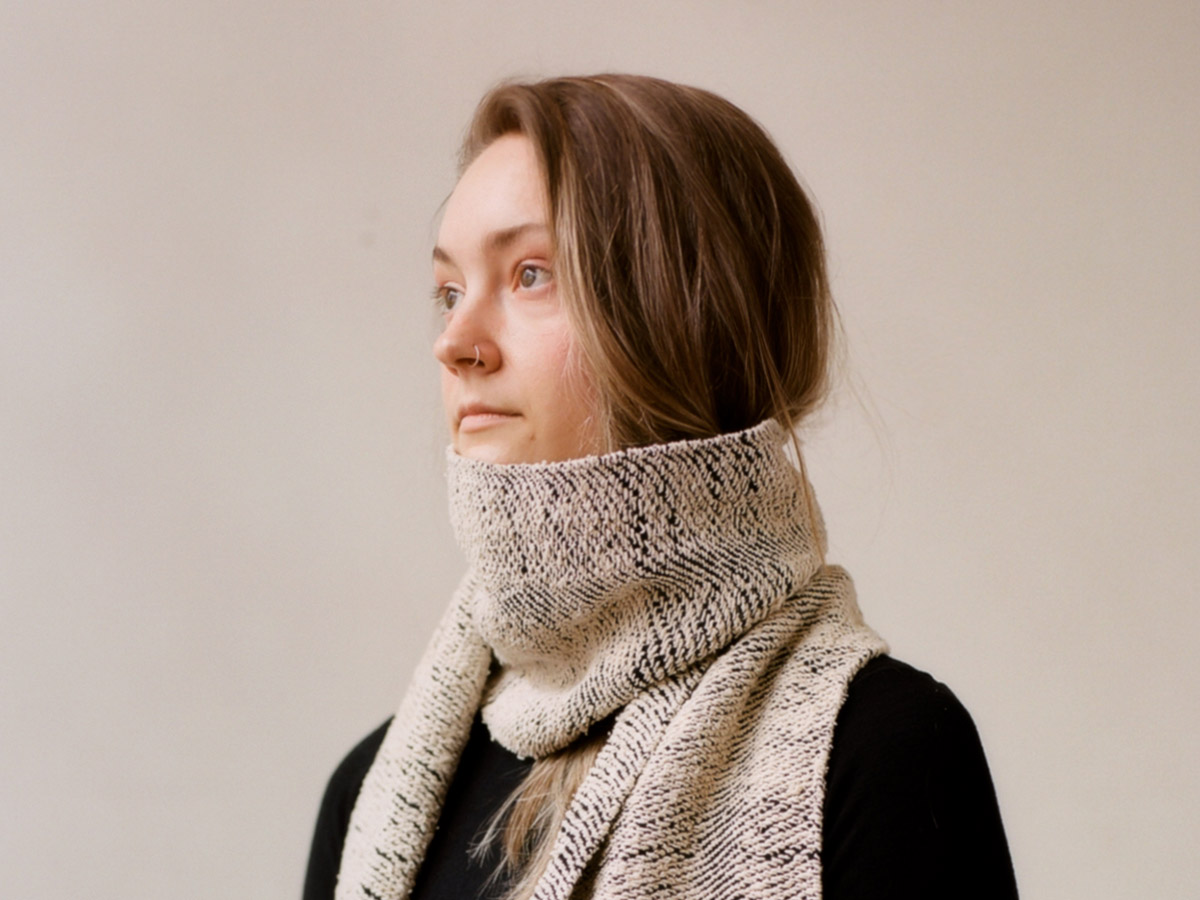 Sam Griffith connects Creative Coding with Enviromentalism
Sam Griffith connects Creative Coding with Enviromentalism
In this post I’d like to introduce you to Sam Griffith, a talented graphic designer based in Detroit, to discuss […]
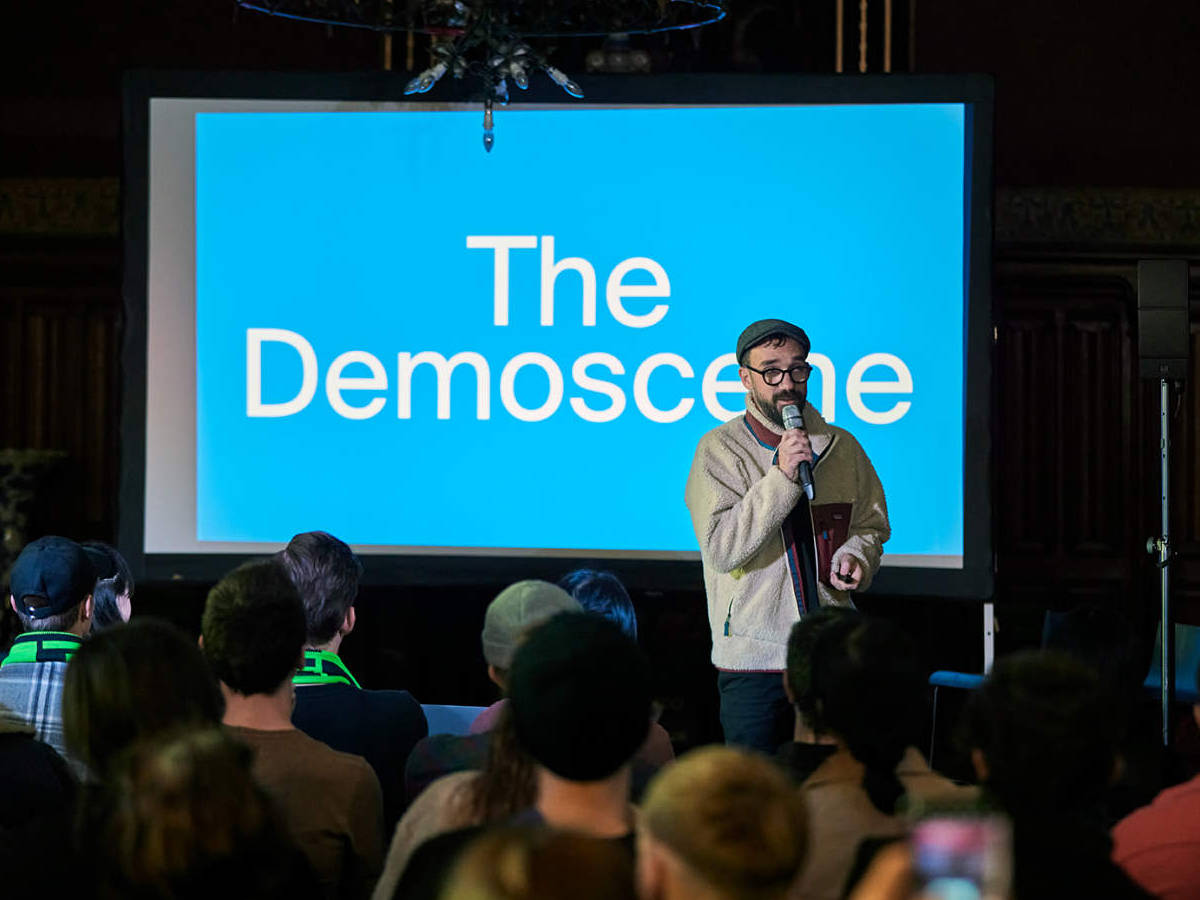 Throwback: My Talk at Demo Festival 2022
Throwback: My Talk at Demo Festival 2022
The next edition of the DEMO Festival is already approaching and I am currently developing a brand new talk for […]
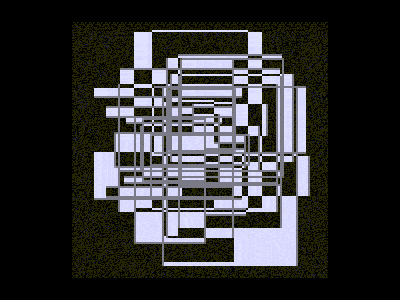 Powers of Two – 128kb by Lena Weber
Powers of Two – 128kb by Lena Weber
20 = 1 21 = 222 = 323 = 824 = 1625 = 3226 = 6427 = 128 … »In […]
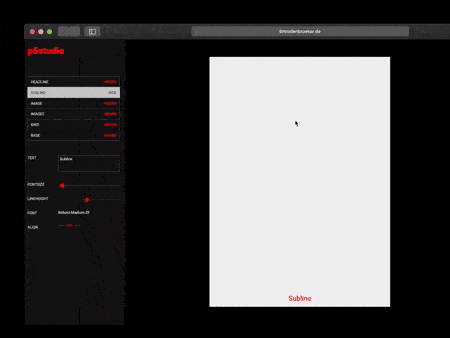 p5.js Design Tools Directory
p5.js Design Tools Directory
Hi! In this post I’ll collect case studies and direct links to tools that people have built with p5.js and […]
 A conversation with Talia Cotton
A conversation with Talia Cotton
During OFFF Festival here in Barcelona, many interesting people come around! This interview with Talia Cotton came about almost by […]
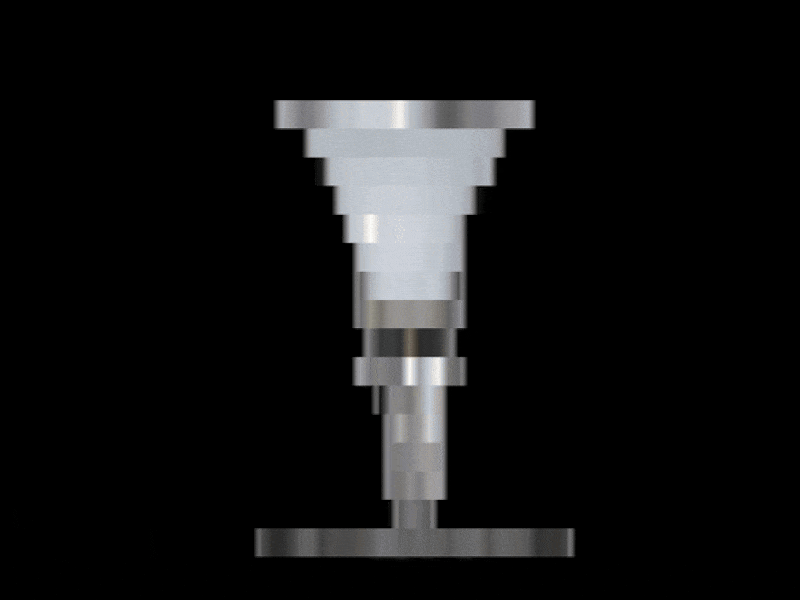 Lena Weber about her collaboration with A. G. Cook
Lena Weber about her collaboration with A. G. Cook
Lena: This 10-minute visualiser for A. G. Cooks album teaser featuring my python archive generator, is one of my favourite […]
 A conversation with Anna Shams Ili
A conversation with Anna Shams Ili
Hi Anna! It was super nice to meet you at the PCD CPH, I really liked your talk in which […]
 A conversation with Lisa Apers
A conversation with Lisa Apers
Hi Lisa, it was amazing to meet you at Processing Community Day in Copenhagen! For those who don’t know you: […]